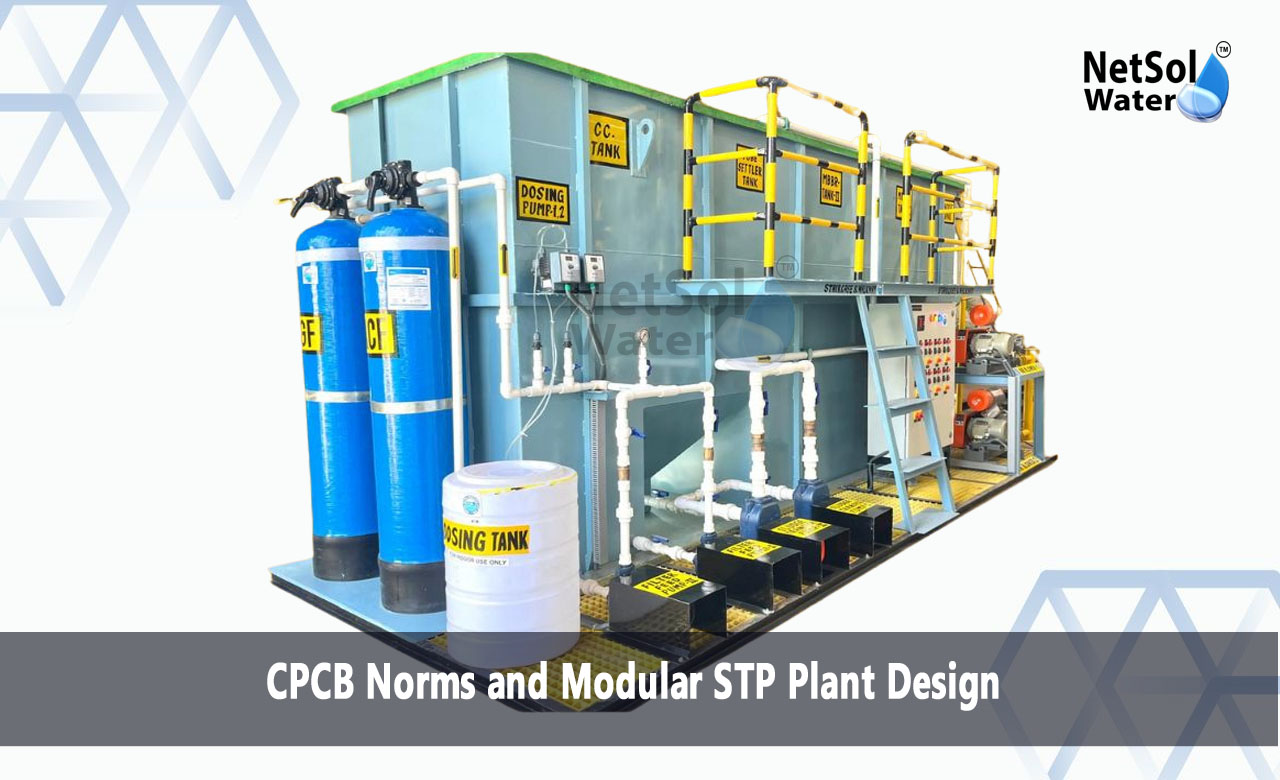CPCB Norms & Modular STP Plant Design
CPCB Norms & Modular STP Plant Design offer a clear path for organizations to meet environmental rules. These rules guide the treatment of waste and water in a way that protects people and nature. Many businesses face stiff challenges when they try to meet these standards. They find that old treatment systems take too long to build and cost too much to run. A modular plant design solves these challenges by delivering ready made units that fit strict norms. This approach lets project teams move from design to operation in less time and with less maintenance. It also helps avoid costly delays that come from failing to meet standards.
Understanding CPCB Norms
Meeting environmental targets starts with knowing the rules set by the Central Pollution Control Board. These rules shape every step of plant design and operation. Let us have a look on some key areas where these norms matter most.
Regulatory Scope
CPCB norms cover water and waste treatment in urban and industrial zones. They set limits on the quality of treated water and the type of pollutants allowed. Designs must aim to keep outputs within these limits to avoid fines and work stoppages.
Effluent Quality Standards
The rules define how much suspended solids and biological contaminants can remain in water after treatment. Plants must include steps like sedimentation and biological processes to meet these targets. This ensures the water you release stays within safe limits.
Monitoring Requirements
Regulations also demand regular checks of inflow and outflow water quality. Automated sensors and manual tests must follow a clear timeline. Plant designs need to allocate space and connections for these monitoring tools. This integration keeps the process smooth and reliable.
Advantages of Modular STP Plant Designs
A modular approach changes how teams build and run treatment systems. It shifts work from long site builds to off site unit manufacture. This change brings big gains in speed and reliability. Let us have a look on some benefits in detail.
Flexibility in Capacity
Modular plants allow you to add or remove units as demand changes. If you need more treatment power you simply add another module. If demand falls you can scale down with no major rebuild. This flexibility helps you adapt fast and save costs.
Reduced Installation Time
Units arrive on site pre assembled and tested. Workers link them together and connect them to pipes and power. This cuts a project timeline by weeks or months. Faster delivery means you meet production targets sooner and avoid rule breaches.
Easier Maintenance
Each module works as a self contained unit. Maintenance teams can isolate one module for work without shutting down the whole plant. This design lowers downtime and keeps operations steady. It also simplifies spare parts management.
Compact Packaged STPs as Regulation Friendly Solutions
Urban areas and small industries need treatment plants that fit tight spaces. Compact packaged STPs meet this need with a small footprint and quick setup. Let us have a look on some features that make them ideal.
Small Footprint Design
These plants need minimal land area. They stack key processes in a few tanks and chambers. This makes them ideal for sites where space is scarce. You install them in yards that would not hold a full scale plant.
Pre Tested Modules
Each STP unit reaches your site after a full trial run. This step proves it meets flow and quality targets. You avoid the time and cost of on site trials and rework. The result is a reliable system from day one.
Plug and Play Installation
A compact STP links to pipes and power with simple clamps and flanges. The process uses standard fittings that most contractors know. This simplifies procurement and speeds up commissioning.
Steps to Achieve Compliance Efficiently
Moving from idea to full operation calls for clear steps. A modular approach can trim each of these steps while keeping you in line with CPCB norms. Let us have a look on some key phases.
Site Assessment and Planning
First you inspect soil and water data. You check existing drains and power lines. This work sets the stage for a plant that will meet flow and quality needs. It also flags any risks that could slow your project.
Design Alignment with Norms
Next you pick modules that meet effluent and monitoring rules. You layout the plant to include sensors and access for tests. You confirm your plan with a regulator review. This step ensures you avoid costly redesign later.
Validation and Commissioning
Once you link modules on site you begin test runs. You monitor input and output until data shows full compliance. After this you hand over operations to your maintenance team. Training ensures they know how to run checks and handle alerts.
Conclusion
Achieving success in regulatory projects rests on a clear link between CPCB Norms & Modular STP Plant Designs and practical steps on site. This approach cuts time and cost while ensuring you meet all environmental targets. It brings you faster returns and comfort that your system works by the book. If you want to learn more or request a consultation on CPCB Norms & Modular STP Plant Designs reach out to our team today. We are ready to guide you to fast compliance.
Contact Netsol Water at:
Phone: +91-9650608473, Email: enquiry@netsolwater.com



